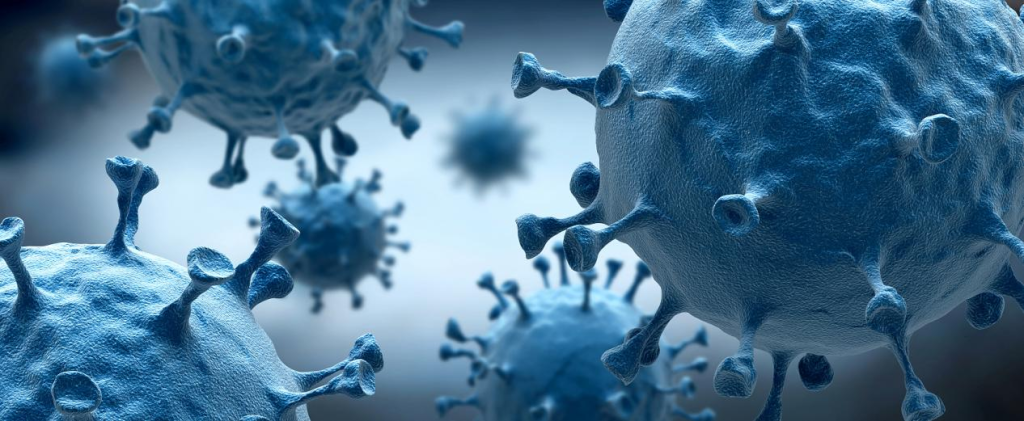- In-Stock Tumor Cell Lines
- Human Orbital Fibroblasts
- Human Microglia
- Human Pulmonary Alveolar Epithelial Cells
- Human Colonic Fibroblasts
- Human Type II Alveolar Epithelial Cells
- Human Valvular Interstitial Cells
- Human Thyroid Epithelial Cells
- C57BL/6 Mouse Dermal Fibroblasts
- Human Alveolar Macrophages
- Human Dermal Fibroblasts, Adult
- Human Lung Fibroblasts, Adult
- Human Retinal Muller Cells
- Human Articular Chondrocytes
- Human Retinal Pigment Epithelial Cells
- Human Pancreatic Islets of Langerhans Cells
- Human Kidney Podocyte Cells
- Human Renal Proximal Tubule Cells
In the realm of cellular biology, distinguishing between stable and transient cell lines is crucial for selecting the appropriate model for research purposes.

Transient cell lines are often used for short-term studies and are characterized by transient expression of the introduced gene, usually for only a few days. This makes them ideal for experiments that focus on immediate gene expression without the need for long-term stability. In contrast, stable cell lines undergo a process of stable transfection, where foreign DNA is integrated into the host cell genome, allowing for consistent gene expression over extended periods. This process begins transiently but is followed by careful selection and amplification to generate stable clones. Therefore, stable cell lines are preferred when the research demands enduring genetic modifications or when cells need to be utilized repeatedly across multiple experiments.
Stable cell lines have several key properties that make them indispensable in scientific research. First and foremost, they provide consistent and long-term protein expression, which is essential for studies that require reliable data over time. This stability minimizes variations that are often encountered in transiently transfected cells, thus improving the reproducibility of experiments [1]. Furthermore, stable cell lines facilitate the mass production of uniform cells, which is crucial for large-scale studies or industrial applications [2]. Key attributes of stable cell lines include: - Long-term gene expression consistency. - Reduction in experimental variability. - Capability for large-scale cell production. These features highlight the advantages of using stable cell lines over their transient counterparts, especially in projects requiring sustained protein production and analysis.
The versatility of stable cell lines is reflected in their widespread use in various scientific research applications. They are pivotal in recombinant protein production, where consistent expression is crucial for producing proteins in large quantities for therapeutic use. In drug discovery and screening, stable cell lines provide a reliable platform for evaluating the efficacy and safety of new compounds. Additionally, they play a significant role in functional genomics studies, enabling researchers to explore gene functions and interactions systematically. Common applications include: - Recombinant protein production. - Drug discovery and screening. - Functional genomics and gene therapy. These applications highlight the importance of stable cell lines as essential tools for advancing our understanding of biological processes and developing novel therapeutic strategies [3].
Methods for Developing stable cell lines
Genetic engineering techniques have revolutionized the field of stable cell line development, offering precise tools for manipulating cell genomes. Among the most prominent methods are CRISPR-Cas9, RNA interference (RNAi), and ribozyme engineering, which enable the specific and efficient targeting of genes to achieve desired genetic modifications [4]. CRISPR-Cas9, in particular, has gained popularity due to its ability to introduce targeted double-strand breaks in DNA, facilitating precise gene editing. This technique allows for the insertion, deletion, or modification of genes, making it a powerful tool for the creation of stable cell lines. Additionally, ATCC provides researchers with stable cell lines that constitutively express Cas9, further streamlining the gene-editing process and improving the efficiency of developing stable cell lines. By utilizing these advanced genetic engineering techniques, researchers can achieve specific genetic modifications with high precision and efficiency, paving the way for innovative applications in biotechnology and medicine.
The process of developing stable cell lines involves meticulous selection processes to ensure that the desired genetic modifications are consistently expressed. Given that chromosomal integration into host genomes is a rare phenomenon, the selection of stably transfected cells becomes critical [5]. Researchers often use selection markers, such as G418 or puromycin resistance, which are co-expressed with the gene of interest to isolate cells that have successfully integrated the desired construct. These selection markers allow identification and culture of cells that maintain the genetic modification over time, thereby increasing the reliability and efficiency of stable cell line development. Furthermore, the selection process often involves multiple stages, including the transfection of host cells with suitable vectors, screening, and the use of selection markers to ensure the stability and integrity of the genetic modifications. Through these rigorous selection processes, researchers can establish stable cell lines that reliably express target genes, facilitating downstream applications in research and therapeutic development.
Stability verification and validation are critical steps in the development of stable cell lines to ensure long-term genetic consistency. Genetic stability testing is a fundamental requirement, as it demonstrates that the genetic sequence of an expression construct remains stable throughout the production life cycle. This testing is crucial for maintaining the quality and reliability of the cell lines over time, ensuring that they consistently express the desired genetic traits. Techniques such as Western Blotting (WB) or Fluorescence-Activated Cell Sorting (FACS) are often employed for this purpose, allowing researchers to validate the expression stability of the gene of interest across multiple generations. Additionally, genetic stability testing forms a key component of production cell bank characterization and is mandated by regulatory guidelines to ensure the safety and efficacy of the cell lines. By rigorously verifying and validating the stability of stable cell line, researchers can confidently utilize these tools in various applications, from basic research to the development of biopharmaceuticals.
Applications in Biotechnology and Pharmaceuticals
The use of stable cell lines in drug discovery and development is indispensable, as these cell lines are critical for several stages of the drug development process. By providing a consistent and reproducible system for testing, stable cell line help researchers evaluate the efficacy and toxicity of new compounds effectively. This reduces the time, effort, and cost associated with traditional methods, making the drug discovery process more efficient. Cellular assays, which are often stable cell-based, are integral to biomedical research and drug-discovery screening applications. These assays can precisely quantify biological responses, allowing researchers to identify promising drug candidates early in the development pipeline. The use of stable cell line ensures that pharmaceutical companies can advance through the drug discovery stages with confidence, knowing they have a reliable platform for their experiments.
In the realm of protein production and biomanufacturing, stable cell lines play a pivotal role. These cell lines are used to manufacture therapeutic biologics or other proteins of interest, ensuring a steady supply of high-quality proteins for research and medical applications. Human cell lines are particularly favored for their ability to produce proteins that are very similar to those synthesized naturally by the human body, offering a significant advantage for therapeutic purposes [6]. Stable producer cell lines, such as HEK293, are preferred for large-scale production due to their high transfection rates and rapid growth rates, which facilitate efficient protein synthesis [7]. The ability to consistently produce specific protein products on a production scale highlights the wide utility of stable cell lines in molecular biology and therapeutic protein production [8].
stable cell lines are crucial in advancing gene therapy research, as they provide a reliable platform for delivering therapeutic genes to patients . These genetically modified cells can be designed to express specific proteins or functions required for therapeutic intervention, paving the way for innovative treatments. For instance, stable cell lines play an important role in developing CAR-T therapies, where CAR-positive samples are essential for creating effective and robust treatment options. By integrating cutting-edge techniques such as RNAi, ribozyme engineering, and CRISPR-Cas-based methods, researchers can enhance antibody production strategies, ensuring the stable expression of therapeutic proteins [4]. This makes stable cell lines an invaluable tool in the ongoing exploration of gene therapy, offering potential solutions for a range of genetic disorders.
Challenges and Future Directions
There are several limitations and potential pitfalls in creating stable cell lines that researchers must navigate carefully. One major challenge is the low protein production often associated with stable insect cell lines, which requires considerable time and effort to grow and select properly [3]. This issue not only extends the duration of experiments but also increases the complexity of maintaining these cultures. In addition, contamination with other cell lines and mycoplasma remains a pervasive problem that can compromise the integrity of experimental results [9]. Moreover, stable cell lines may exhibit altered characteristics compared to their parental cells, potentially affecting their utility in specific applications. Such changes can manifest in various ways, including differences in cell behavior and gene expression, which may mislead the interpretation of experimental data.
Recent advances in technology and methods have significantly impacted the field of stable cell line development. Innovations in flow cytometry, single-cell dispensers, and micro-robotics have greatly improved the precision and efficiency of cell line creation. These technologies allow researchers to sort and manipulate cells with high precision, facilitating the generation of stable cell lines that uniformly express the desired transgene. Additionally, the combination of computer technology and advanced optical techniques has streamlined the process, making it more accessible and less labor-intensive. As a result, scientists can now develop stable cell lines with greater reproducibility and consistency. These technological advances have not only improved the quality of cell lines, but also reduced the time and cost required to develop cell lines.
The future trends in stable cell line research and applications are poised to transform the landscape of biomedical research. Leveraging automation, high-throughput screening, and bioengineering, scientists are developing more stable, productive, and cost-effective cell lines. These innovations promise to enhance the scalability of cell line production, making it feasible for widespread use in various research and industrial applications. Moreover, the integration of big data and next-generation sequencing is enabling more precise and targeted approaches to cell line development. This data-driven methodology can identify the best candidates for stable cell line generation, thereby increasing the efficiency of the entire process. As researchers continue to explore these cutting-edge technologies, the potential for stable cell line to advance scientific discovery and therapeutic development will undoubtedly expand.
Faqs
Q: What are stable cell lines and how do they differ from transient cell lines? A: Stable cell lines are cell cultures that have integrated foreign DNA into their genome, allowing them to replicate the DNA along with their own and pass it on to progeny cells. This is in contrast to transient cell lines, in which the foreign DNA is temporary and is not passed on to daughter cells. Stable cell lines provide consistent gene expression and are invaluable for long-term studies, whereas transient cell lines are used for short-term experiments.
Q: What are the advantages of using stable cell lines in scientific research? A: Stable cell lines offer several advantages, including consistent gene expression, reproducibility of results over time, and the ability to study gene function in a controlled and reliable environment. They are particularly useful for producing proteins, performing drug screening, and conducting long-term studies of gene expression and regulation.
Q: What techniques are commonly used to develop stable cell lines? A: Developing stable cell lines typically involves genetic engineering techniques such as transfection, which is the introduction of foreign DNA into cells. This is followed by a selection process, often using antibiotic resistance, to identify cells that have successfully integrated the foreign DNA. Finally, verification and validation steps ensure the stability and functionality of the cell line over time.
Q: How are stable cell lines utilized in biotechnology and pharmaceuticals? A: Stable cell lines play a crucial role in biotechnology and pharmaceuticals by serving as a reliable platform for producing therapeutic proteins and antibodies. They are also essential in drug discovery and development, where they are used to screen potential drug candidates. In gene therapy research, stable cell lines help in studying gene function and the effects of gene modification.
Q: What are some challenges associated with creating stable cell lines, and what future trends in this field? A: Challenges in creating stable cell lines include ensuring genetic stability, avoiding mutations during cell passage, and achieving efficient gene integration. Advances in technologies, such as CRISPR and other gene-editing tools, are expected to increase the efficiency and precision of stable cell line development. Future trends include the use of more sophisticated techniques to enhance the stability and functionality of these cell lines for diverse applications.
In conclusion, stable cell lines serve as a foundational tool in modern biological research and biotechnology, offering significant advantages over transient cell lines due to their ability to maintain consistent expression of target genes over extended periods. Their development involves complex genetic engineering techniques paired with rigorous selection and validation processes, ensuring reliability for various applications, from drug discovery to protein production and gene therapy. Despite the challenges and limitations of stable cell line creation, ongoing advancements in technology promise to improve the efficiency and efficacy of stable cell line development. As the field continues to advance, it is clear that stable cell lines will remain integral to scientific progress, enabling researchers to tackle complex biological questions and drive innovation in therapeutic applications.
References
1. Generation of Stable Cell Lines Expressing Golgi .... (n.d.) retrieved October 29, 2024, from www.ncbi.nlm.nih.gov/pmc/articles/PMC10207834/
2. Stable Cell Lines - Cell Transfection. (n.d.) retrieved October 29, 2024, from cell-transfection.com/stable-cell-lines/
3. Stable Cell - an overview | ScienceDirect Topics. (n.d.) retrieved October 29, 2024, from www.sciencedirect.com/topics/agricultural-and-biological-sciences/stable-cell#:~:text=The%20stable%20cells%20have%20a,to%20replace%20the%20dead%20cells.
4. Cell Line Techniques and Gene Editing Tools for Antibody .... (n.d.) retrieved October 29, 2024, from www.ncbi.nlm.nih.gov/pmc/articles/PMC6006397/
5. Guideline for Generation of Stable Cell Lines. (n.d.) retrieved October 29, 2024, from knowledge.lonza.com/downloadasset.ashx?assetId=28243
6. Human cell lines for biopharmaceutical manufacturing. (n.d.) retrieved October 29, 2024, from pmc.ncbi.nlm.nih.gov/articles/PMC5152558/
7. HEK293 Cell Line as a Platform to Produce Recombinant .... (n.d.) retrieved October 29, 2024, from www.ncbi.nlm.nih.gov/pmc/articles/PMC8711270/
8. Generating stable cell lines with quantifiable protein .... (n.d.) retrieved October 29, 2024, from www.tandfonline.com/doi/full/10.2144/000114534
9. Cell lines - PMC. (n.d.) retrieved October 29, 2024, from www.ncbi.nlm.nih.gov/pmc/articles/PMC3341241/

Copyright - Unless otherwise stated all contents of this website are AcceGen™ All Rights Reserved – Full details of the use of materials on this site please refer to AcceGen Editorial Policy – Guest Posts are welcome, by submitting a guest post to AcceGen you are agree to the AcceGen Guest Post Agreement – Any concerns please contact [email protected]





